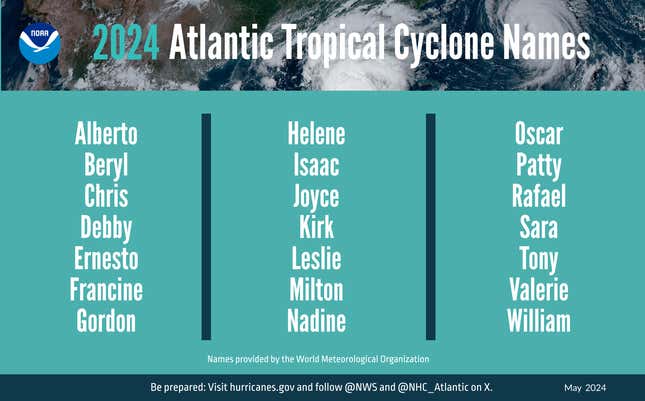Hurricane Beryl was upgraded to a Class 5 storm earlier at the moment, making it the earliest storm to hit the heavy-hitting benchmark on file. The storm’s winds peaked at a staggering 160 miles per hour (258 km/hr) because it continued its northwesterly course throughout the Caribbean.
Philip Klotzbach, a meteorologist at Colorado State College, stated on X that the earlier record-holder was Hurricane Emily, which hit Class 5 standing on July 17, 2005. According to The New York Times, Beryl will stay a minimum of a Class 3 storm because it strikes in the direction of Jamaica.
Sadly, Beryl’s expeditious depth is just not sudden. In Could, the Nationwide Climate Service predicted “above-normal” hurricane activity for the season, which runs from June 1 by way of November 30. These months approximate the timeframe by which the Atlantic Ocean and the Gulf of Mexico are inclined to heat up, offering the situations for enormous storm techniques to kind over their waters.
NWS forecasters predicted as much as 25 named storms for the season, 4 to seven of which have been predicted to kind main hurricanes, or storms with winds better than 111 miles per hour (178.64 kilometers per hour). Class 5 storms are these with winds that exceed 157 mph (252 km/hr).
Beryl is the second named storm this 12 months after Tropical Storm Alberto, which petered out in late June after dumping rain throughout coastal Mexico and Texas. Beryl is anticipated to enter the Gulf of Mexico by the weekend, although it’s not clear whether or not it is going to preserve its present depth by the point it passes Jamaica.

Life-threatening winds and storm surge are anticipated in Jamaica on Wednesday as Beryl continues to maneuver west simply south of Hispaniola. Jamaica is (clearly) beneath a hurricane warning, and NWS acknowledged a tropical storm warning is in impact for the Cayman Islands and southwestern Haiti.
A paper published earlier this 12 months within the Proceedings of the Nationwide Academy of Sciences proposed revising the Saffir-Simpson scale for hurricane classes to incorporate a sixth class, to account for storms turning into extra excessive as ocean temperatures heat. Although it’s exhausting to attract an express hyperlink between local weather change and excessive climate, warming ocean temperatures and elevated moisture within the air present favorable situations for extra intense hurricanes.
“We anticipated that local weather change was going to make the winds of probably the most intense storms stronger,” Michael Wehner, a coauthor of the paper and an excessive climate researcher at Lawrence Berkeley Nationwide Laboratory, told Grist on the time. “What we’ve demonstrated right here is that, yeah, it’s already taking place. We tried to place numbers on how a lot worse it’ll get.”
The workforce concluded that “plenty of latest storms have already achieved this hypothetical class 6 depth” and based mostly on their fashions “extra such storms are projected because the local weather continues to heat.”
With the earliest Class 5 storm on file now whipping its means throughout the Atlantic, we’d higher hunker down. The following few months are primed to be a doozy.
Extra: Hurricanes Now Twice as Likely to Strengthen and Grow, Study Finds
Trending Merchandise

Cooler Master MasterBox Q300L Micro-ATX Tower with Magnetic Design Dust Filter, Transparent Acrylic Side Panel, Adjustable I/O & Fully Ventilated Airflow, Black (MCB-Q300L-KANN-S00)

ASUS TUF Gaming GT301 ZAKU II Edition ATX mid-Tower Compact case with Tempered Glass Side Panel, Honeycomb Front Panel, 120mm Aura Addressable RGB Fan, Headphone Hanger,360mm Radiator, Gundam Edition

ASUS TUF Gaming GT501 Mid-Tower Computer Case for up to EATX Motherboards with USB 3.0 Front Panel Cases GT501/GRY/WITH Handle

be quiet! Pure Base 500DX ATX Mid Tower PC case | ARGB | 3 Pre-Installed Pure Wings 2 Fans | Tempered Glass Window | Black | BGW37

ASUS ROG Strix Helios GX601 White Edition RGB Mid-Tower Computer Case for ATX/EATX Motherboards with tempered glass, aluminum frame, GPU braces, 420mm radiator support and Aura Sync










